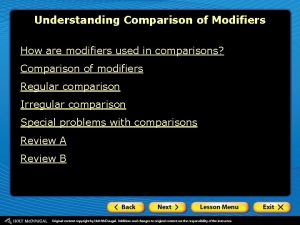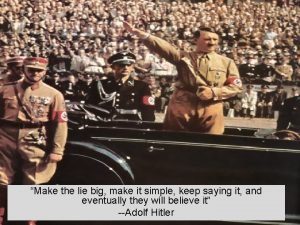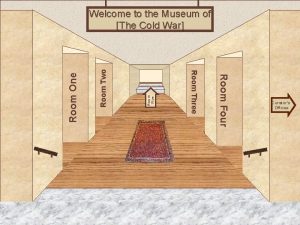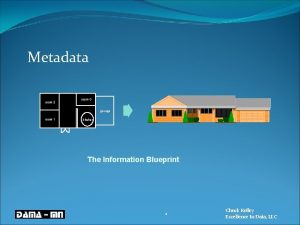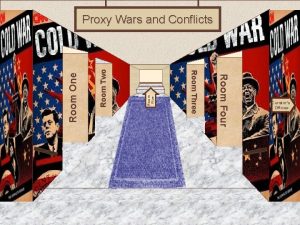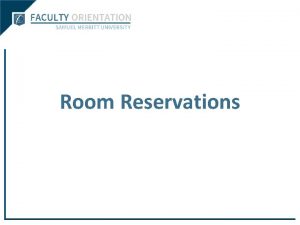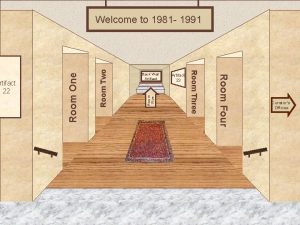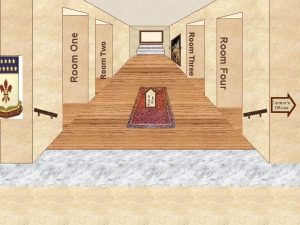Do Now How could we make the room

















































- Slides: 49

Do Now • How could we make the room warmer/cooler? • Is the amount of heat to raise the temperature of a small room by 2 degrees the same as it is to raise the temperature of a large room by 2 degrees? Why?

Do Now • We can make the room warmer by adding heat or cooler by removing heat • No, the temperature is not the same, the larger room would require more heat to raise the temperature.

Monday Shout Outs • High Scores on the test! – – – Marquell Brianna A. Cedrick Latavia Juliette Lance Leoriandy Kyle Cynthia Dillon Naje

Monday Shout Outs • Class Dojo High Points! – Walter: 11 – Juliette: 11 – Marian: 9 Nathan: 8 Cedrick: 6 Yasmin: 6 Kiara: 6 Carla: 14 Anthony: 13 Jennifer, Leorandy, Karelys: 12 Charisma: 11 Lelia: 9 Madison: 9 Breanna A: 9 Tia: 8 Angel: 8 Taijae: 8

Heat Objective • Students will learn to identify conditions under which thermal energy tends to flow

Heat Essential Question • How is thermal energy transferred? • What causes an object to change temperature? • Explain the difference between heat and temperature?

Heat Radiation Conduction Specific heat Convection

What is heat? • Heat the flow of thermal energy from warmer to cooler objects. • Thermal energy: energy due to particle movement

What is heat? • As an object is heated, the total amount of kinetic energy within the object increases. • Thermal energy always flows from a highertemperature material to a lower-temperature material.

What is heat? (cont. ) • As thermal energy flows into a substance, kinetic energy increases causing an increase in temperature. • This increase in energy can also cause particles to move farther apart causing an increase in volume known as thermal expansion. – Ex. Thermometers

What is heat? (cont. ) • Total amount of thermal energy depends on temperature and mass. • Think about it – Does high temperature mean high amount of heat?

Think about it • Does high temperature mean high amount of heat? – High temperature does not necessarily mean a great amount of heat. – A great amount of heat does not necessarily mean high temperature. – Boiling water has a high temperature, the ocean has a much lower temperature, but an ocean has more heat energy because of the mass

Think about it • At the Big Island of Hawaii, hot, molten lava flows into the sea. The temperature of the lava is much higher than that of the seawater. • What happens to the water when the lava reaches it?

Think about it • What happens to the water when the lava reaches it? – As the lava reaches the water, heat flows from the lava to the water which becomes hotter. The particles in the water speed up and spread out until some turns some into water vapor.

Practice • Heat from Friction – Form a hypothesis – Read the procedure – Record data – Intemperate data and infer

Review • Heat is the flow of thermal energy from warmer to cooler objects • Increase in energy can also cause particles to move farther apart causing an increase in volume known as thermal expansion.

Do Now • In what direction does heat flow? • What causes an object to increase temperature?

Do Now • Heat flows from one substance to another from warm to cool • An increase in thermal energy causes an object to change temperature

Heat Objective • Students will learn to compare how thermal energy can be transferred by conduction, convection and radiation

Heat Essential Question • Explain the difference between condition, convection and radiation • What are every day examples of conduction, convection, and radiation? • How is specific heat related to temperature? • Which type of heat transfer do you come in contact with the most?

How does heat travel? • Thermal energy is transferred in three ways. – By conduction – By convection – By radiation

How does heat travel?

How does heat travel?

How does heat travel?

How does heat travel?

How does heat travel? • Match the example: Match the example to the type of heat transfer


How does heat travel? (cont. ) • Conduction the movement of energy, such as heat or electricity, through direct contact. – Occurs in solids, liquids and gases. In your group: List 2 examples of conduction

How does heat travel? (cont. ) • Convection the transfer of energy by the flow of a liquid or a gas. • Why is heating water an example of convection?

How does heat travel? (cont. ) • Heating Water – Caused by hot parts rising and cool parts sinking because most liquids and gases become less dense when heated. – Warm rises cool sinks

How does heat travel? (cont. ) • Radiation the transfer of thermal energy through electromagnetic rays. – No medium is necessary because electromagnetic rays can travel through empty space. – Ex. Sun heating Earth, toasters, ovens.

What is specific heat? • Specific heat is the amount Specific Heat of Substances of heat energy, usually Specific Heat measured in joules, needed Substance (in J/g °C) to raise the temperature of Aluminum 0. 90 1 gram of a substance by 1°C. Cooper 0. 39 • Changing the temperature Iron 0. 45 of a material with a low 0. 14 specific heat is easier than Mercury to change the temperature Water (liquid) 4. 19 of a material with a high specific heat.

What is specific heat? • How is specific heat related to temperature? • Specific heat is the amount of energy needed to raise the temperature of 1 gram of a substance by 1 degree Celsius

What is specific heat? • Would the liquid inside a thermometer be more likely to have a high specific heat or low specific heat? Specific Heat of Substances Substance Specific Heat (in J/g °C) Aluminum 0. 90 Cooper 0. 39 Iron 0. 45 Mercury 0. 14 Water (liquid) 4. 19




Exit Quiz

Do Now • What is the difference between conduction, convection, radiation?

Do Now

Fill In the Blank

e. Review Heat • Be prepared to write and discuss upcoming questions

What’s Next • Silently put everything away • There should be nothing on your desk

Matching Game • Be very careful when opening the bag, there are many small matching pieces • The front and back sheet has the directions for each section • Use the folded page for puzzle piece reference • For the journal activity, you do not need to write it out, discuss with your group, be prepared to share to the class

Heat Transfer Review

Closing Activity Worksheet • Without using your textbook or notes compete the paragraph • Tests on heat transfer tomorrow!

Do Now • A pot of tea and a cup of tea have the same temperature. However, thermal energy of the pot of tea is higher than thermal energy of the cup of tea. How is this possible?

Do Now • Thermal energy, but not temperature, depends on how much of a substance is present. The water molecules in the pot and cup have the same average kinetic energy. Therefore, the water temperature is the same. However, The pot has more water molecules that the cup. There fore the pot of tea has more thermal energy

Heat Transfer Test • Voices at a level 0!
 Let's look at some examples
Let's look at some examples Could you please tell me where
Could you please tell me where Could you tell me where is the bookstore
Could you tell me where is the bookstore I've told you to clean your room a million times
I've told you to clean your room a million times Now i see it now you don't
Now i see it now you don't There a bedroom downstairs
There a bedroom downstairs To room nineteen character analysis
To room nineteen character analysis Hotel database sql queries
Hotel database sql queries Modifiers comparative and superlative
Modifiers comparative and superlative Make the lie big make it simple
Make the lie big make it simple Go make a difference we can make a difference
Go make a difference we can make a difference Make the lie big, make it simple
Make the lie big, make it simple Sơ đồ cơ thể người
Sơ đồ cơ thể người Tư thế ngồi viết
Tư thế ngồi viết đặc điểm cơ thể của người tối cổ
đặc điểm cơ thể của người tối cổ Hát kết hợp bộ gõ cơ thể
Hát kết hợp bộ gõ cơ thể Cách giải mật thư tọa độ
Cách giải mật thư tọa độ Glasgow thang điểm
Glasgow thang điểm ưu thế lai là gì
ưu thế lai là gì Thẻ vin
Thẻ vin Thơ thất ngôn tứ tuyệt đường luật
Thơ thất ngôn tứ tuyệt đường luật Cái miệng nó xinh thế chỉ nói điều hay thôi
Cái miệng nó xinh thế chỉ nói điều hay thôi Các châu lục và đại dương trên thế giới
Các châu lục và đại dương trên thế giới Từ ngữ thể hiện lòng nhân hậu
Từ ngữ thể hiện lòng nhân hậu Diễn thế sinh thái là
Diễn thế sinh thái là Tư thế ngồi viết
Tư thế ngồi viết Lp html
Lp html Giọng cùng tên là
Giọng cùng tên là Làm thế nào để 102-1=99
Làm thế nào để 102-1=99 Hát lên người ơi
Hát lên người ơi Khi nào hổ con có thể sống độc lập
Khi nào hổ con có thể sống độc lập đại từ thay thế
đại từ thay thế Quá trình desamine hóa có thể tạo ra
Quá trình desamine hóa có thể tạo ra Vẽ hình chiếu vuông góc của vật thể sau
Vẽ hình chiếu vuông góc của vật thể sau Cong thức tính động năng
Cong thức tính động năng Tỉ lệ cơ thể trẻ em
Tỉ lệ cơ thể trẻ em Thế nào là mạng điện lắp đặt kiểu nổi
Thế nào là mạng điện lắp đặt kiểu nổi Các loại đột biến cấu trúc nhiễm sắc thể
Các loại đột biến cấu trúc nhiễm sắc thể Lời thề hippocrates
Lời thề hippocrates Bổ thể
Bổ thể Vẽ hình chiếu đứng bằng cạnh của vật thể
Vẽ hình chiếu đứng bằng cạnh của vật thể độ dài liên kết
độ dài liên kết Các môn thể thao bắt đầu bằng tiếng nhảy
Các môn thể thao bắt đầu bằng tiếng nhảy Khi nào hổ con có thể sống độc lập
Khi nào hổ con có thể sống độc lập điện thế nghỉ
điện thế nghỉ Biện pháp chống mỏi cơ
Biện pháp chống mỏi cơ Trời xanh đây là của chúng ta thể thơ
Trời xanh đây là của chúng ta thể thơ Gấu đi như thế nào
Gấu đi như thế nào Thế nào là số nguyên tố
Thế nào là số nguyên tố Thiếu nhi thế giới liên hoan
Thiếu nhi thế giới liên hoan








